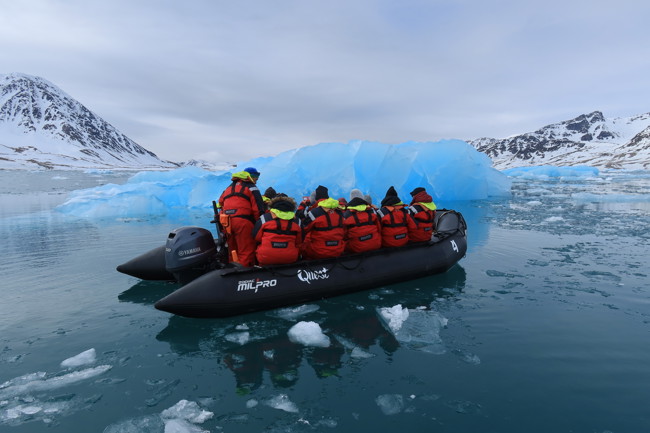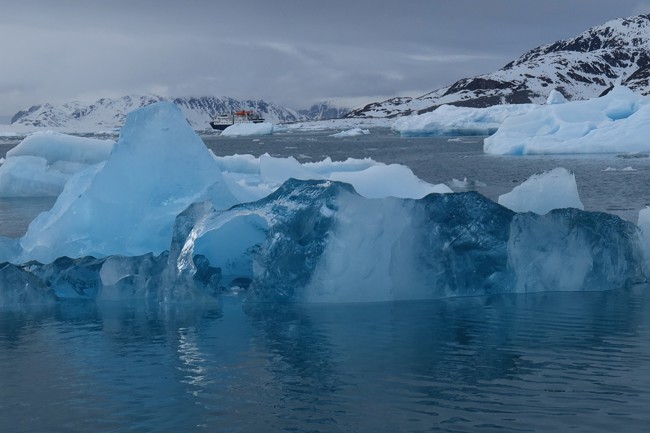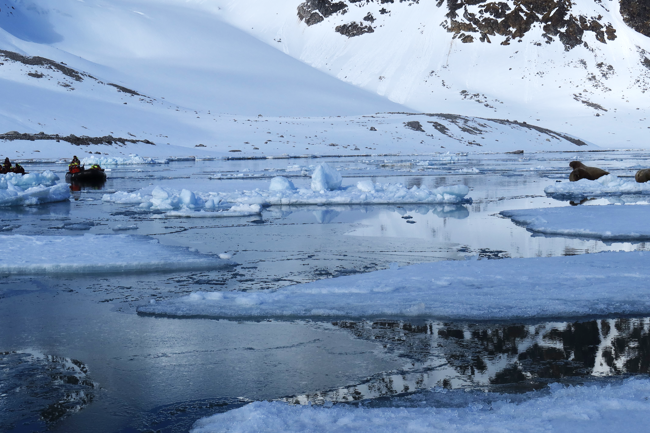The question arises as we are Zodiac cruising among ice blocks, small icebergs and remaining sea ice in Bjørnfjorden. Day two on our Svalbard cruise with M/S Quest started with a fabulous morning with lots of walruses and continued in the world of ice after lunch.
Svalbard is 60% covered by glaciers and one of these glaciers is Smeerenburg glacier, in the northwest of Svalbard.
The Smeerenburg glacier calves into Bjørnfjorden, with Göteborgnuten to the south and Uddvallaryggen to the north. That could make many of the Swedish participants to feel at home, if it wasn’t for the blue ice. So why is it blue?




The explanation lies in how glaciers form. It all starts with snowflakes that fall and build up layer upon layer. Between all the snowflakes there is a lot of air. When this snow is compressed into ice, this air is also compressed more and more. When the glacier ice is relatively young, it still contains a lot of air and then all the light is reflected and the ice is white. As the ice becomes more compressed, the air bubbles are reduced so all the light, except the blue, is absorbed. Finally, when the ice is compressed so that the air bubbles are incredibly small and invisible, the ice appears completely clear.
So, as we are cruising through this ice landscape, we can roughly date the glacier ice we are passing, white ice is tens to hundreds of years old, blue ice is hundreds to thousands of years old while transparent ice is several thousands of years old.


Please note: Depending on the lens used for a photo or video shot an animal may appear to be closer than it is. We always follow strict wildlife guidelines to ensure that we do not cause any disturbance.


